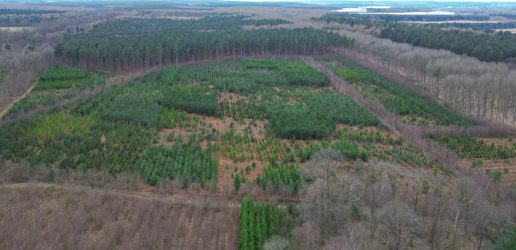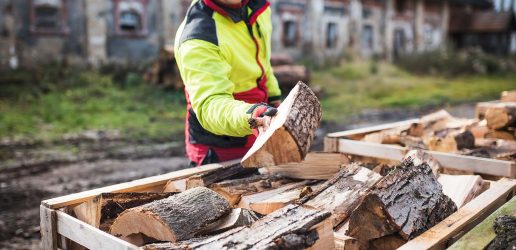
It was recently announced that 24 innovative projects will receive funding of up to £200,000 from the government’s Biomass Feedstocks Innovation Programme. The suite of BEIS-funded projects will underpin the development of knowledge to boost biomass productivity in the UK, through landscape planning, breeding, planting, cultivating and harvesting of organic energy materials.
Forest Research has been successful in winning funding from the programme as part of a collaboration led by Forest Creation Partners (FCP). The partnership will use geospatial data science to identify optimal planting sites for forestry-based biomass production, integrating the Forest Research Ecological Site Classification (ESC) decision support tool for species suitability with FCP spatial constraints’ data.
FCP’s ForestFounder system combines a wide range of geospatial data to identify optimal sites for productive forestry. Because ForestFounder can scan almost unlimited areas algorithmically, it provides a unique capability to unlock investment in biomass production, by helping landowners decide where and what to plant within their estates and advising investors on optimal sites to acquire or lease for planting.
The project will expand ForestFounder’s geographical coverage from England to Great Britain and provide additional species options for Short Rotation Coppice (SRC) and Short Rotation Forestry (SRF). It will also improve its ability to account for future climate change in its species recommendations. This could greatly enhance the potential for British biomass production by increasing the number and variety of sites available.
As part of this work, Forest Research will update its open species suitability datasets to incorporate likely drought constraints, updating its Ecological Site Classification decision support system and will publish the new datasets on the climatic suitability of SRC and SRF species across Great Britain. The work will also identify the potential for updating risks by utilising UKCP18 climate projections.
Recent News
View All news
Seventeen coniferous tree species show early promise for future commercial timber production in the UK
Researchers have set up a network of nine large scale experiments across the UK to test the suitability of 17 tree species as potential alternatives for future commercial timber production.
Forest Research are looking for people involved in the harvesting, processing, transport, import, or trade of firewood in Scotland to complete an important survey.

New guide to help local authorities conduct a people survey on the social value of their treescapes
A new step-by-step guide to help local authorities, charities and civic societies carry out a people survey to understand social and cultural values related to trees in their area, is now available.

Seventeen coniferous tree species show early promise for future commercial timber production in the UK
Researchers have set up a network of nine large scale experiments across the UK to test the suitability of 17 tree species as potential alternatives for future commercial timber production.
Forest Research are looking for people involved in the harvesting, processing, transport, import, or trade of firewood in Scotland to complete an important survey.

New guide to help local authorities conduct a people survey on the social value of their treescapes
A new step-by-step guide to help local authorities, charities and civic societies carry out a people survey to understand social and cultural values related to trees in their area, is now available.

